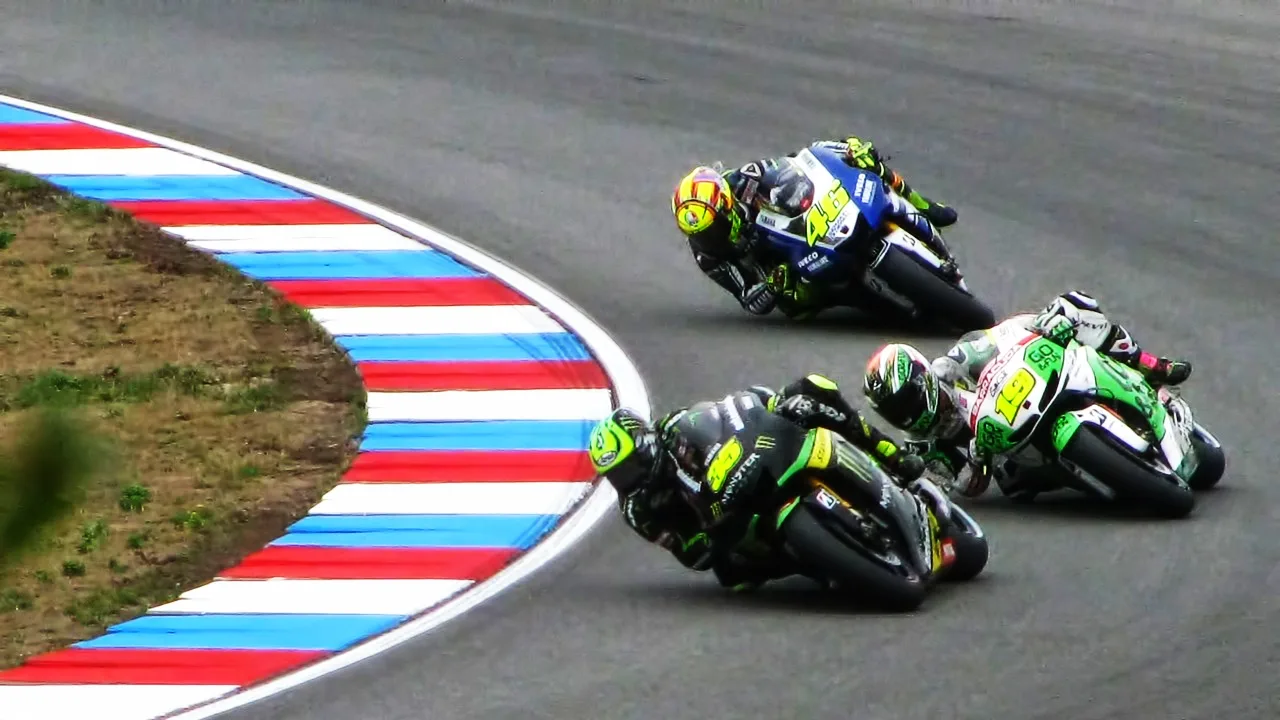Since the sport of Grand Prix motorcycle contesting was inaugurated in 1949, the automobiles challenging it have been separated into many classes based mostly on engine capacity. Over time, the tiniest engines and two-stroke engines have been phased out. In the fast-paced world of MotoGP, the bikes are deprived of the uncertainty of the stars. At the peak of motorcycle racing technology, these specifically planned vehicles push the margins of power, handling, and speed. These various motorcycles are the most popular of all the manufacturers who have entered the MotoGP field, yet they have all won races.
What bikes are used in MotoGP? Here is the list
Yamaha M1:
When Rossi moved to Yamaha in 2004, a highly contested move, some said he was exchanging championships for money. As he led Yamaha to its first championship in more than ten years while riding a YZF-R1 M, he swiftly proved everyone else wrong. Both Yamaha and he demonstrated their ability to build a bike worthy of a championship. He proved he could win on any bike. With the Yamaha YZF-R1 M, you can unleash your inner Rossi. It has all the power needed for your own exciting track day, even though it is street-legal. Use the throttle to fully test the 998cc liquid-cooled inline four-cylinder engine.
Desmosedici GP7 Ducati:
In the past, Ducati prioritized the Superbike World Championship over the MotoGP. But when it substituted four-stroke motors, the whole thing was changed. After a strong twitch and a rapid drop to the rear of the pack, the Ducati’s climb from the lowest of the pack was noticeable by the publication of the Desmosedici GP7. Their unique and only GP rider designation was accomplished by them on this bike. This conquest came at the perfect instant when Ducati released a street-legal sort of motorcycle. The Desmosedici is one of the most reasonable motorcycles with a MotoGP design, even with its short-term attainment.
Honda RC211V:
The motorbike that revealed Honda’s ability to preserve its supremacy even after moving from two-stroke to four-stroke engines is the RC211V. For its first few years on the pathway, the Honda RC211V executed excellently. This was commonly affected by the engine’s design, which balanced it with a five-cylinder to lessen weight. The street style was manufactured between 2002 and 2006. The bike is still thrilling and fascinating to drive even after 20 years of possession. Honda used the same enhancements and machinery it had learned from the challenges of the MotoGP events in its later models.
Duke GP KTM 890:
The special edition KTM 890 Duke was enthused by the company’s MotoGP racing determination. In comparison to the other bikes on this list, KTM has not endeavored to reproduce the appearance of a MotoGP bike with this one. Rather, it structures a simple design and is subjective by its MotoGP competitors. Although the bike has a PASC slipper clutch and an 889cc equivalent twin engine, it isn’t meant to be driven fast on the pathway.
Honda NSR500:
This motorcycle is among the most efficacious in racing history. It made its race inauguration in 1984 and went on to win every race it participated in between 1984 and 2002. A 499cc two-stroke engine powers the motorcycle. This bike is deserving of a spot on this list because of its 112-degree V angle, which enhanced cold air and provided more area for the carburetors. Up until 2002, Honda carried on developing the NSR500. But in 2002, the World Championship’s rules underwent a significant alteration that forced Honda to reroute its racing development and bring an end to the NSR500.
- Audi GT50 Concept: A Loud Reminder of Why Car Enthusiasts Fell in Love With Audi
- Nearly 30% of UK Drivers Believe Car Tax Should Be Based on Mileage — Survey
- Why Planes and Boats Escaped the Luxury Tax But Cars Didn’t
- Australia’s Headlight Confusion: Authorities Warn Drivers After Viral $250 Headlight Rule Goes Wild Online
- 2025 Hyundai Venue Facelift Launched in India – Full Details, Variants, and Price
RC-213V Honda:
Producing production-run versions of its greatest motorcycles makes sense for a company that consistently ranks among the top motorcycle manufacturers in the MotoGP. A bike like that is the Honda RC-213V. Honda designed this MotoGP bike to be as near to a real race bike as possible, in contrast to other street-legal manufacturing versions. In order to make the bike street legal, the engineers installed just the right amount of equipment. It’s not a street sportbike with an aerodynamic makeover. It is an authentic MotoGP bike with a headlight, brake light, and turn signals.
The Aprilia RSV4 RF:
The bike that Maxi Biaggi rode to become the 2010 Superbike World Champion is the road-legal Aprilia RSV4 RF. This bike is designed for track use only; the RSV4 is meant for street riding. The updated V four-cylinder 1099cc engine produces 201 horsepower, so even if it may not have as much power as before, its performance will not let you down. The bike’s angular front end, compact width, elevated footpeg positioning for deeper leaning through corners, and conspicuous winglets integrated into the fairings all scream MotoGP.
Conclusion:
Just a few of the MotoGP bikes are listed above. It’s comprehensible why they captivate enthusiasts all across the world, they are true industrial astonishments. As engineers push the restrictions of what’s feasible, MotoGP motorcycles are always varying. We may anticipate seeing much more advanced and compelling devices in the future, thorough with electric power and vigorous aerodynamics.
